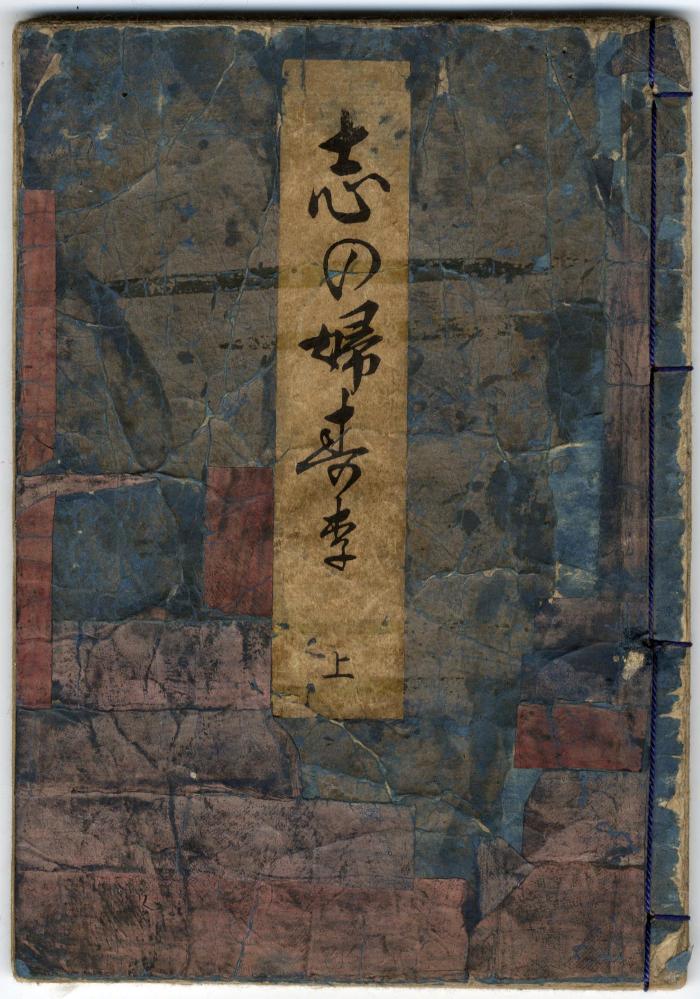Katsushika Hokusai (葛飾北斎) (artist 1760 – 1849)
Shinobu-zuri (志の婦壽李) - shunga ehon
ca 1830
6 in x 8.5 in (Overall dimensions) British Museum Fourteen chūban sheets folded and bound with covers into an 8.5 x 6 inch book 10 double-page illustrations plus text.
There is a version of this book in the collection of the British Museum. They date their copy to ca. 1830. There are some differences between the ehon in the Lyon Collection and the one at the British Museum. (See the link above.)
****
Japanese language and literature is a language of homonyms and puns. Often similar sounds, written with different kanji characters, have totally different meanings. We have these in English, like 'their' for 'there'. But the levels to which they are used in Japanese is amazing by comparison. It is for this reason that we can't help but wonder if this book of erotic images entitled Shinobu-zuri (志の婦壽李) isn't somehow related to Shinobu-zuri (忍夫摺).
Shinobu-zuri, as used in the second example, is an ancient technique of printing fabrics made in Michinoku by impressing leaves into the untreated cloth. It is also referred to as Shinobu mojizuri (しのぶもぢずり) or fern-printed cloth or mottling. I can't imagine that the pressing of a delicate fern or leaf into an untreated fabric in the process of making something incredibly beautiful and delicate was not the analogy used by Hokusai to create these images. The words 'pressing into' are key here. Japanese has a long history of using evocative terms which are meant to suggest such allusions. Surely the same process is working here.
The poet Basho recorded in his travel diary: “On the following morning I made my way to the village of Shinobu to look at the stone upon whose chequered face they used to dye a certain type of cloth called shinobu-zuri. I found the stone in the middle of a small village, half buried in the ground. According to the child who acted as a self-appointed guide, this stone was once on the top of a mountain, but the travellers who came to see it did so much harm to the crops that the farmers thought it a nuisance and thrust it down into the valley, where it rests now with its chequered face downward. I thought the story was not altogether unbelievable.”
****
While the British Museum identifies the artist as Hokusai, a Japanese dealer lists it as being by Eisen. We are not well versed enough to know which one it is, but until proven otherwise we will stick Hokusai. However, there is another curiosity in that the British Museum does not give the title we show here, but Keio University library, which appears to own copies, does. They also say it is by Hokusai.
erotic prints (shunga - 春画) (genre)
picture book (ehon - 絵本) (genre)
